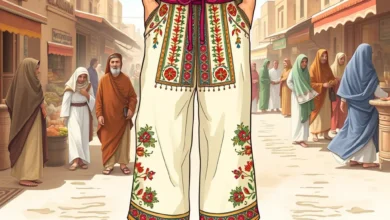The keffiyeh, that checkered scarf you’ve likely seen, carries a weight far beyond its simple appearance. More than just a piece of fabric, it’s a potent symbol woven into the history, culture, and political landscape of the Middle East. This article will unravel the rich tapestry of the keffiyeh, exploring its origins, its symbolic significance, and its surprising journey into global fashion. Prepare to delve into the fascinating story of this iconic textile.
Origins and Traditional Uses
The keffiyeh, also known as a shemagh or hatta, is a traditional headdress primarily associated with the Middle East. Its origins are deeply rooted in the region’s agricultural past. Historically, it served practical purposes for the Bedouin people and rural communities.
These nomadic and agrarian populations utilized the keffiyeh as protection against the harsh desert climate. Its thick fabric and versatile design offered shelter from the sun’s scorching rays, blowing sand, and the cold night temperatures.

A Practical Garment
The keffiyeh is far from a simple scarf. Its size and construction allow for a multitude of practical uses. It can be folded and wrapped in various ways to protect the head, face, and neck. Beyond weather protection, it can also be used to carry small items, act as a makeshift towel, or even be used as a rope in emergencies. This adaptability made it an essential garment for life in the challenging desert environment.
See also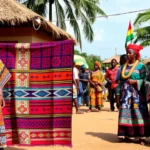 Kente Cloth: A Symbol of Ghanaian Identity and Cultural Pride
Kente Cloth: A Symbol of Ghanaian Identity and Cultural Pride
Variations in Design and Color
While the black and white pattern is arguably the most recognizable, the keffiyeh comes in various designs and colors. Historically, the color and pattern could indicate the wearer’s region, tribe, or even political affiliation. For example, some variations might incorporate red, which often signified connection with specific communities or political movements. The specific patterns and their meanings have become somewhat diluted in modern times as the keffiyeh has moved into a broader global context.
Keffiyeh as a Symbol of Resistance
Beyond its practical uses, the keffiyeh gained profound political significance, particularly during the 20th century. It became closely associated with Palestinian nationalism and resistance against occupation. This association solidified its role as a powerful symbol of solidarity and cultural identity for Palestinians and their supporters worldwide.
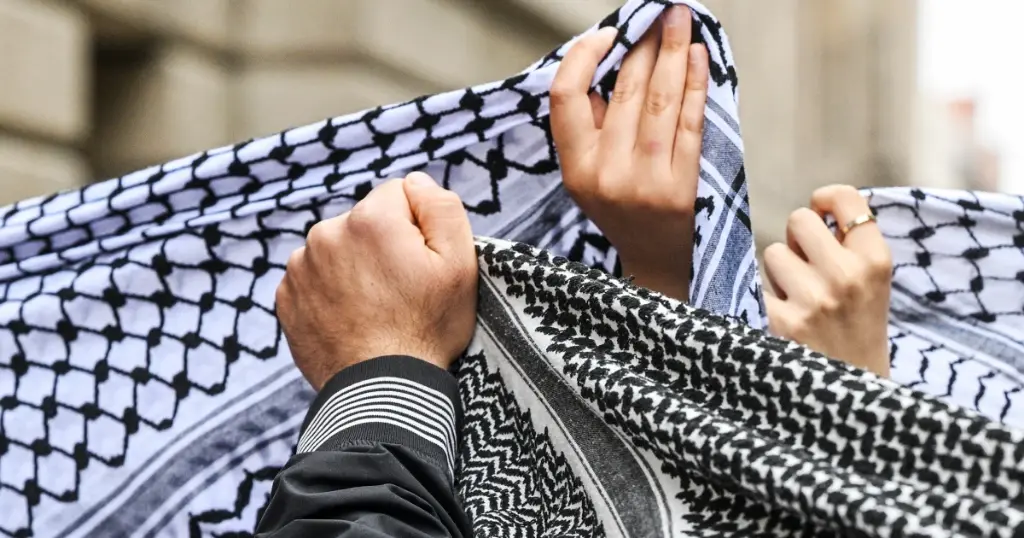
The Palestinian Struggle
The keffiyeh’s transformation into a symbol of resistance is deeply tied to the Palestinian struggle for self-determination. During the 1936-1939 Arab Revolt in Palestine, Palestinian rebels began wearing the keffiyeh to conceal their identities and avoid identification by British authorities.
This act of defiance elevated the garment from a traditional headdress to a potent emblem of rebellion and resilience. The black and white pattern specifically came to be seen as a symbol of Palestinian solidarity and a visible manifestation of their collective struggle.
See also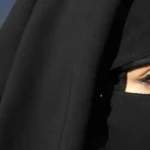 Niqab: Unveiling the Mystery, Exploring Tradition and Modernity
Niqab: Unveiling the Mystery, Exploring Tradition and Modernity
Yasser Arafat and the Keffiyeh
The late Palestinian leader, Yasser Arafat, played a key role in popularizing the keffiyeh as a political symbol. He consistently wore it, strategically placing it on his head to drape over his right shoulder. This particular style became instantly recognizable, cementing the keffiyeh’s position as a powerful visual representation of Palestinian national identity on the global stage. Arafat’s prominent use of the keffiyeh further cemented its connection to the Palestinian cause.
A Symbol of Solidarity
The keffiyeh’s symbolic reach extended beyond Palestine. It became a potent symbol of solidarity with liberation movements and struggles against oppression around the globe. Activists and supporters in various countries, recognizing the shared narratives of resistance, embraced the keffiyeh as an expression of their own struggles and a gesture of support for the Palestinian cause. It became a visual shorthand for opposition to injustice.
Keffiyeh in Global Fashion
The keffiyeh’s journey from a practical garment to a potent political symbol took another turn with its adoption into the world of fashion. While this has raised complex issues around cultural appropriation, there’s no denying the global reach and influence the keffiyeh has achieved.
Adoption by Mainstream Fashion
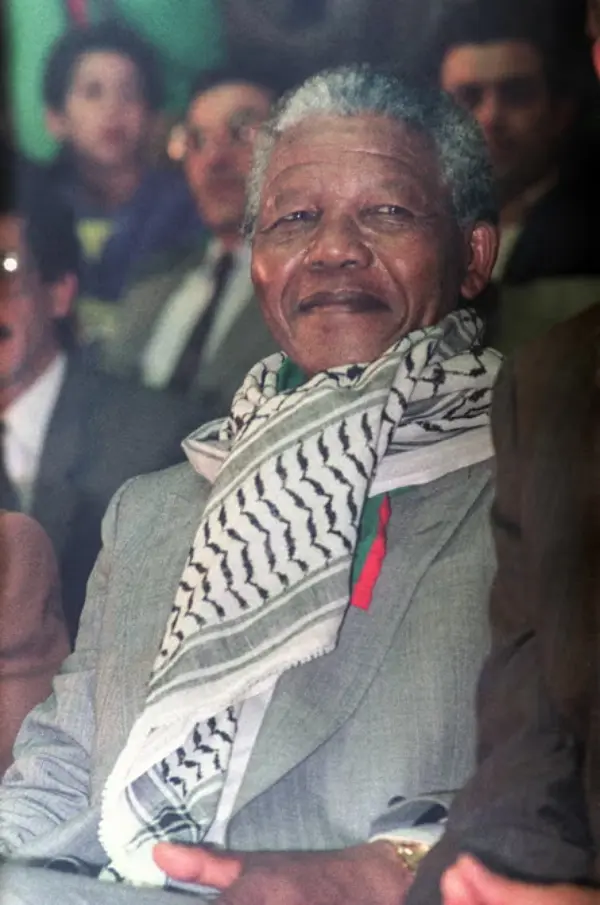
In the late 20th and early 21st centuries, the keffiyeh began appearing on runways and in fashion magazines. It became a trend, often marketed as an edgy or bohemian accessory. This move from a symbol of resistance to a fashion statement sparked considerable debate and controversy. For some, its adoption in mainstream fashion represented the appropriation and trivialization of a powerful symbol with deep cultural and political significance.
Ethical Considerations
The commodification of the keffiyeh has ignited discussions about ethics and cultural sensitivity. Critics argue that by adopting the keffiyeh without acknowledging its history and significance, individuals contribute to a form of cultural appropriation, especially when it is detached from its political context. There is a growing awareness of the need to engage with the keffiyeh’s origins respectfully, not simply as a fashionable accessory.
The Keffiyeh’s Continued Use and Evolution
Despite debates around its fashion use, the keffiyeh remains an important part of Palestinian and Arab culture. It is still worn by individuals as a matter of heritage, cultural expression, and political solidarity. While its meaning may have become more complex, its resonance remains strong, representing a diverse array of cultural, political, and social dimensions.
The Keffiyeh Today
Today, the keffiyeh occupies a complex and multifaceted space. While it continues to be a symbol of Palestinian identity and resistance, it also exists in a globalized world, influenced by fashion trends, commercialization, and varying levels of cultural awareness.
Preserving Heritage and Authenticity
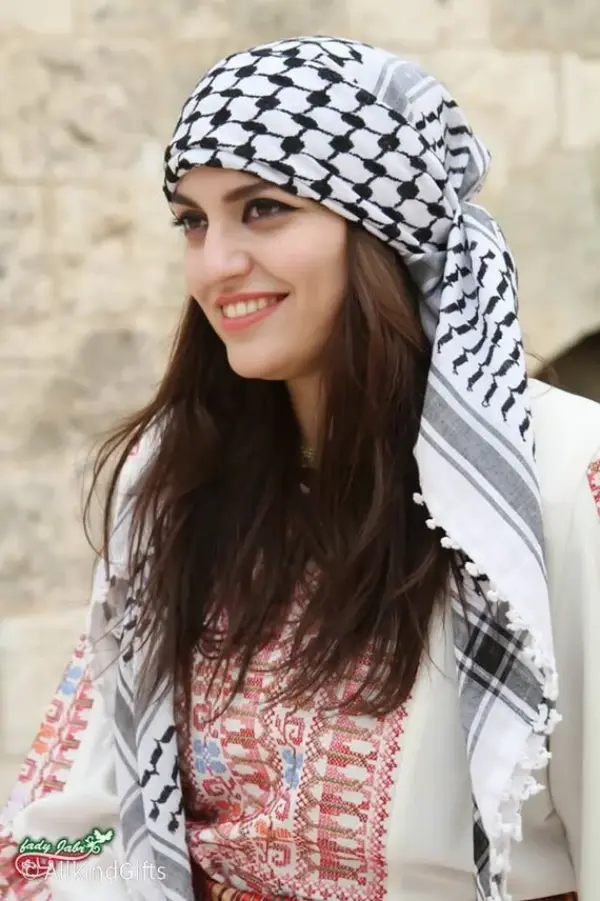
Efforts are being made to preserve the authenticity and heritage of the keffiyeh. This includes supporting Palestinian artisans and businesses that produce the garment in a traditional way. These initiatives aim to ensure that the keffiyeh’s production and consumption remain connected to its cultural origins and its role as a symbol of Palestinian identity.
The Keffiyeh as a Conversation Starter
The keffiyeh’s global visibility has also made it a conversation starter. When someone wears a keffiyeh, it often prompts questions about its origin and meaning. This can create opportunities for education and dialogue about Palestinian history, culture, and the ongoing struggle for justice and self-determination. It highlights how clothing can be used to spark meaningful conversation about crucial global issues.
Navigating its Different Meanings
Ultimately, understanding the keffiyeh requires recognizing its multiple meanings and complex history. It is a symbol of heritage, resistance, and, in some cases, fashion. How individuals engage with the keffiyeh reflects their awareness of these different aspects. By being informed about its past and present, people can appreciate the depth and richness of this iconic textile.
The keffiyeh is far more than just a scarf; it is a living testament to history, culture, and political struggle. Its journey from a practical garment to a global symbol highlights its extraordinary capacity to transcend geographical and cultural boundaries.
Understanding the keffiyeh’s origins, its symbolism, and its complex relationship with fashion provides a valuable insight into the dynamics of cultural identity, resistance, and globalization. As you encounter a keffiyeh, remember its rich and multifaceted story, a story that continues to be written and worn on a global scale.

